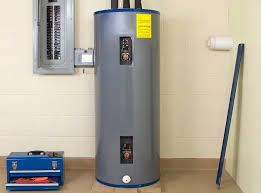What to Maintain Your Home's Hot Water System ProperlyProfessional Tips on Maintaining Your Home's Hot Water System
What to Maintain Your Home's Hot Water System ProperlyProfessional Tips on Maintaining Your Home's Hot Water System
Blog Article
This great article in the next paragraphs on the subject of How to Maintain a Hot Water Heater in a Few Simple Steps is exceptionally insightful. Don't miss out on it.

Hot water is important for everyday comfort, whether it's for a refreshing shower or cleaning meals. To ensure your hot water system runs effectively and lasts longer, routine maintenance is key. This write-up supplies practical ideas and understandings on just how to maintain your home's warm water system to stay clear of interruptions and costly repair services.
Introduction
Maintaining your home's hot water system may seem overwhelming, yet with a few straightforward steps, you can guarantee it operates efficiently for many years ahead. This guide covers every little thing from understanding your warm water system to DIY maintenance pointers and understanding when to call professional help.
Value of Keeping Your Warm Water System
Regular maintenance not just extends the lifespan of your hot water system but also guarantees it operates effectively. Disregarding maintenance can cause decreased effectiveness, greater energy bills, and even premature failing of the system.
Indicators Your Hot Water System Needs Upkeep
Knowing when your warm water system needs focus can protect against significant concerns. Look out for indicators such as inconsistent water temperature, unusual noises from the heating unit, or corroded water.
Understanding Your Warm Water System
Before diving right into upkeep jobs, it's useful to recognize the basic elements of your hot water system. Generally, this consists of the water heater itself, pipes, anode rods, and temperature controls.
Month-to-month Upkeep Tasks
Regular regular monthly checks can help catch small problems before they intensify.
Purging the Hot Water Heater
Purging your water heater removes sediment buildup, improving efficiency and prolonging its life.
Monitoring and Replacing Anode Rods
Anode rods avoid rust inside the tank. Inspecting and replacing them when worn is critical.
Checking and Changing Temperature Level Setups
Readjusting the temperature level setups makes certain optimal performance and safety.
DIY Tips for Maintenance
You can carry out several maintenance tasks on your own to maintain your warm water system in leading problem.
Looking for Leakages
On a regular basis evaluate pipelines and links for leaks, as these can lead to water damage and greater costs.
Testing Stress Alleviation Valves
Examining the pressure relief valve guarantees it operates correctly and prevents excessive stress buildup.
Insulating Pipelines
Shielding hot water pipes decreases warmth loss and can save power.
When to Call an Expert
While DIY upkeep is advantageous, some issues need expert expertise.
Complicated Concerns Requiring Specialist Aid
Examples include significant leaks, electrical issues, or if your water heater is constantly underperforming.
Regular Professional Upkeep Benefits
Specialist upkeep can include complete evaluations, tune-ups, and guaranteeing conformity with safety standards.
Conclusion
Routine upkeep of your home's warm water system is essential for efficiency, durability, and expense financial savings. By following these tips and knowing when to look for specialist help, you can make sure a reliable supply of hot water without unanticipated interruptions.
How to Maintain an Instant Hot Water Heater
Before tinkering with your hot water heater, make sure that it’s not powered on. You also have to turn off the main circuit breaker and shut off the main gas line to prevent accidents. Also turn off the water valves connected to your unit to prevent water from flowing into and out of the appliance. 2. When you’re done, you have to detach the purge valves’ caps. These look like the letter “T” and are situated on either side of the water valves. Doing so will release any pressure that has accumulated inside the valves while at the same time avoid hot water from shooting out and burning your skin. 3. When the purge valves’ caps are removed, you have to connect your hosing lines to the valves. Your unit should have come with three hoses but if it didn’t, you can purchase these things from any hardware or home repair shops. You can also get them from retail stores that sell water heating systems. Read the user’s manual and follow it to complete this task properly. When the hosing lines are connected, open the purge port’s valves. 4. You should never use harsh chemical cleaners or solutions when cleaning your unit. Make use of white vinegar instead. It should be undiluted and you’ll probably use about 2 gallons. 5. Now flush your water heater. This task should probably take about 40 minutes. We can’t give you specific directions for this because the procedure is carried out depending on the type, model and brand of your heater. With that being said, refer to the user’s manual. 6. When you’re done draining the unit, you have to turn off the purge port valves again. Remove the hosing lines that you earlier installed on each of the water valves. Put the valve caps (purge port) back in their respective places and be very careful so as not to damage the rubber discs that are found inside these caps. 7. Now that everything’s back in place, check your user’s manual again to find out how to reactivate your water heating system. 8. Once it is working, turn one of your hot water faucets on just to let air pass through the heater’s water supply pipes. Leave the tap on until water flows smoothly out of it. https://www.orrplumbing.com/blog/2014/september/how-to-maintain-an-instant-hot-water-heater/

I was shown that editorial on Tips on Maintaining a Water Heater through someone on another blog. For those who liked our article if you please be sure to share it. Many thanks for your time. Revisit us soon.
Call Today Report this page